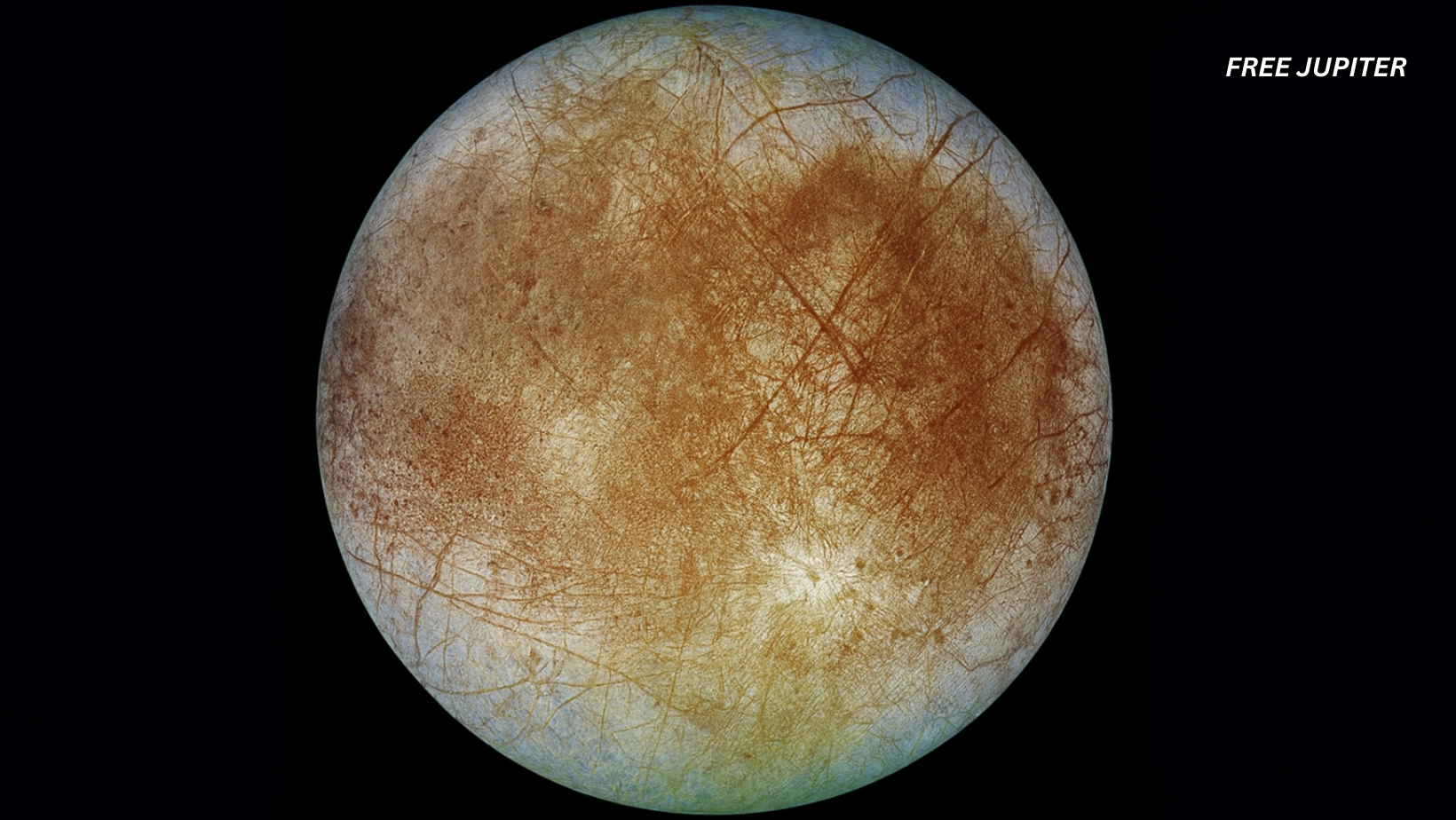For decades, scientists have looked at Europa—one of Jupiter’s many moons—as one of the best places to search for life beyond Earth. At first glance, it doesn’t look very inviting. Its surface is a wasteland of cracked ice, battered by Jupiter’s powerful magnetic field, and colder than anything we could survive without extreme protection. Yet, beneath that frigid shell lies one of the biggest mysteries in the solar system: a hidden ocean that may contain more water than all of Earth’s oceans combined.
This possibility makes Europa an exciting candidate in the search for extraterrestrial life. NASA’s upcoming Europa Clipper mission, set to launch in the next few years and arrive around 2030, will give us the clearest look yet at this icy world. But here’s the big question: even if Europa has the right ingredients for life, could we survive there?
A Frozen Surface Hiding an Ocean
Europa looks like a cracked billiard ball wrapped in ice. Its outer shell is a thick layer of frozen water, possibly tens of miles deep. Beneath that lies a global saltwater ocean, kept from freezing solid by a curious phenomenon called tidal heating.
Because Europa is locked in a gravitational tug-of-war with Jupiter and its neighboring moons, the moon flexes and stretches as it orbits. This constant squeezing generates heat inside Europa’s rocky interior, which then warms the ocean below the ice. It’s similar to how bending a paperclip back and forth makes it warm.
Scientists estimate this ocean contains twice as much water as Earth’s combined seas. That’s an astonishing thought: a tiny moon orbiting a gas giant may hold the largest body of water in the solar system.
Read more: Jupiter Used To Be Twice As Big — It Could Have Held 2,000 Earths Inside
The Ingredients for Life
On Earth, life thrives where three things come together: water, chemistry, and energy. Europa seems to check all three boxes.
- Water: No contest here—Europa has more than enough. Liquid water is one of the biggest prerequisites for life as we know it.
- Chemistry: If the ocean interacts with Europa’s rocky seafloor, it may absorb essential elements like carbon, nitrogen, and phosphorus—the raw materials that living things need.
- Energy: Thanks to tidal heating, Europa’s ocean may not just be liquid—it may also have hydrothermal vents, much like the ones deep in Earth’s oceans. On Earth, these vents teem with strange organisms that thrive without sunlight, relying instead on chemical energy.
Taken together, these factors make Europa one of the most tantalizing places to search for microbes—or even more complex life—beyond Earth.
The Europa Clipper Mission
NASA isn’t planning to land astronauts on Europa anytime soon, but the Europa Clipper spacecraft will give us the most detailed survey yet. After arriving in 2030, it will swoop past Europa about 50 times, getting within just 16 miles (25 kilometers) of its surface.
The spacecraft will carry nine scientific instruments to peek beneath the ice using radar, measure the moon’s magnetic field to confirm the presence of a salty ocean, and analyze the composition of Europa’s thin atmosphere. The mission could even detect plumes of water vapor, which have been spotted erupting from the moon’s surface in past observations. If confirmed, these geyser-like plumes would allow scientists to sample the ocean indirectly—without drilling through miles of ice.
Read more: Huge Chunks of Ancient Space Objects Could Be Buried Inside Mars
Could Humans Survive There?
Here’s where things get complicated. While microbes might find Europa cozy, humans would face nearly impossible odds.
- Extreme Cold: The average surface temperature is about -260°F (-162°C). For comparison, that’s colder than the coldest temperature ever recorded on Earth’s Antarctica.
- Radiation: Jupiter’s magnetic field bombards Europa’s surface with intense radiation. Without heavy shielding, a human could receive a lethal dose in just a single day.
- Isolation: Even if we could build protective habitats, the moon is 390 million miles away from Earth at its closest. A supply mission would take years, not months.
In short, Europa might support microbial life, but it is far from ready for humans. Any attempt to settle there would require building underground or under-ice shelters, using radiation-proof technology, and finding a way to generate heat and oxygen sustainably.
Related Worlds Worth Considering
Europa isn’t the only icy moon that excites scientists. Its neighbors—and even moons of Saturn—offer similar possibilities:
- Enceladus (Saturn’s Moon): Known for shooting giant plumes of water vapor into space, Enceladus also hides a salty ocean beneath its icy shell. NASA’s Cassini spacecraft flew through one of these plumes in 2015 and detected organic molecules, another tantalizing clue for habitability.
- Ganymede (Jupiter’s Moon): The largest moon in the solar system may have multiple layers of oceans stacked beneath its ice crust. Unlike Europa, it has its own magnetic field, which could provide some protection from Jupiter’s radiation.
- Titan (Saturn’s Moon): Titan has lakes and rivers—not of water, but of liquid methane and ethane. It’s a completely different chemistry from Earth, but it proves that strange and diverse conditions can still create fascinating environments.
Studying these moons together gives scientists a broader picture of how life might arise under very different conditions.
Why This Matters for Us
Even if humans can’t move to Europa, the search is about more than colonization. Discovering even the tiniest microbes swimming beneath Europa’s ice would be a groundbreaking moment in science. It would prove that life is not unique to Earth—and if it happened twice in just one solar system, it might be common throughout the universe.
This is why missions like Europa Clipper are so exciting. They bring us closer to answering one of humanity’s oldest questions: Are we alone?
Read more: NASA Confirms Mars’ Core Is Solid, Not Molten
Final Thoughts
Europa is both inviting and hostile. Inviting because it has the essential ingredients for life, and hostile because its surface is unlivable for humans. While microbes might thrive in the hidden ocean, our species would need science-fiction-level technology to make it more than a quick visit.
Still, the moon remains a beacon of hope for astrobiology. As Europa Clipper races toward its 2030 arrival, we may soon learn whether this icy world is just a frozen wasteland—or one of the universe’s secret havens for life.
Featured image: GPT-5o Rendering.
Friendly Note: FreeJupiter.com shares general information for curious minds. Please fact-check all claims and double-check health info with a qualified professional. 🌱










